
12 minute read
viewpoint: conveyor systems
from BTI Winter 2021-22
by Maritime-AMC
INNOVATING THE PRESENT
R. TODD SWINDERMAN, CEO EMERITUS OF MARTIN ENGINEERING
Higher production demands across all bulk handling segments require increased efficiency at the lowest cost of operation, in the safest and most effective manner possible. As conveyor systems become wider, faster and longer, more energy output and more controlled throughput will be needed. Add an increasingly stringent regulatory environment and cost-conscious plant managers must closely review which new equipment and design options align with their long-term goals for the best return on investment, as Martin Engineering explains
Safety at Higher Belt Speeds
Safety is likely to become a new source of cost reduction. The percentage of mines and processing facilities with a robust safety culture are likely to increase over the next 30 years to the point where it is the norm, not the exception. In most cases, with only a marginal adjustment to the belt speed, operators quickly discover unanticipated problems in existing equipment and workplace safety. These problems are commonly indicated by a larger volume of spillage, increased dust emissions, belt misalignment and more frequent equipment wear/failures.
Higher volumes of cargo on the belt can produce more spillage and fugitive material around the system, which can pose a tripping hazard. According to the US Occupational Safety and Health Administration (OSHA), slips, trips and falls account for 15% of all workplace deaths and 25% of all workplace injury claims.[1] Moreover, higher belt speeds make pinch and sheer points in the conveyor more dangerous, as reaction times are drastically reduced when a worker gets clothing, a tool or a limb caught from incidental contact.[2]
The faster the belt, the quicker it can wander off its path and the harder it is for a belt tracker to compensate, leading to spillage along the entire belt path. Caused by uncentred cargo, seized idlers or other reasons, the belt can rapidly come in contact with the mainframe, shredding the edge and potentially causing a friction fire. Beyond the workplace safety consequences, the belt can convey a fire throughout the facility at extremely high speed.
WHEN A CONVEYOR ISN’T CENTRE-LOADED, THE CARGO WEIGHT PUSHES THE BELT TOWARD THE MORE LIGHTLY-LOADED SIDE © MARTIN ENGINEERING 2022
Another workplace hazard – one that is becoming progressively more regulated – is dust emissions. An increase in the volume of cargo means greater weight at higher belt speeds, causing more vibration on the system and leading to reduced air quality from dust. In addition, cleaning blade efficiency tends to decline as volumes rise, causing more fugitive emissions during the belt’s return. Abrasive particulates can foul rolling components and cause them to seize, raising the possibility of a friction fire and increasing maintenance costs and downtime. Furthermore, lower air quality can result in fines and forced stoppages by inspectors.
Correcting Misalignment Before It Happens
As belts get longer and faster, modern tracking technology becomes mandatory, with the ability to detect slight variations in the belt’s trajectory and quickly compensate before the weight, speed and force of the drift can overcome the tracker. Typically mounted
on the return and carry sides every 21-50m -- prior to the discharge pulley on the carry side and the tail pulley on the return – new upper and lower trackers utilise innovative multiple-pivot, torque-multiplying technology with a sensing arm assembly that detects slight variations in the belt path and immediately adjusts a single flat rubber idler to bring the belt back into alignment.
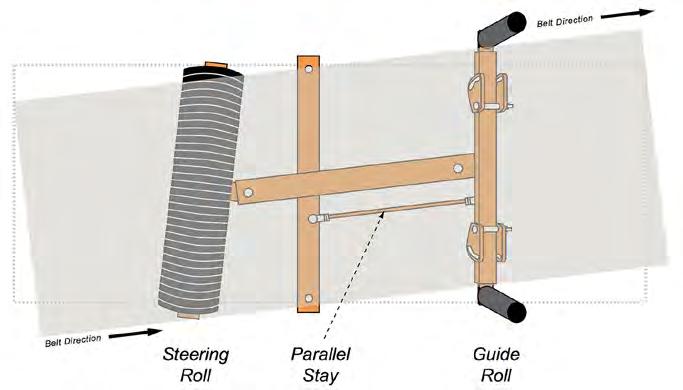
THE PIVOTING RIBBED ROLLER DESIGN GRABS THE BELT AND USES THE OPPOSING FORCE TO SHIFT IT BACK INTO ALIGNMENT © MARTIN ENGINEERING 2022
Modern Chute Design
To drive down the cost per ton of conveyed material, many industries are moving towards wider and faster conveyors. The traditional troughed design is likely to remain a standard. But with the push toward wider and higherspeed belts, bulk handlers will need substantial development in more reliable components, such as idlers, impact beds and chutes.
A major issue with most standard chute designs is that they are not engineered to manage escalating production demands. Bulk material unloading from a transfer chute on to a fast-moving belt can shift the flow of material in the chute, resulting in off-centre loading, increasing fugitive material spillage and emitting dust well after leaving the settling zone.
Newer transfer chute designs aid in centring material on to the belt in a well-sealed environment that maximises throughput, limits spillage, reduces fugitive dust and minimizes common workplace injury hazards. Rather than material falling with high impact directly onto the belt, the cargo’s descent is controlled to promote belt health and extend the life of the impact bed and idlers by limiting the force of the cargo at the loading zone. Reduced turbulence is easier on the wear liner and skirting and lowers the chance of fugitive material being caught between the skirt and belt, which can cause friction damage and belt fraying.
Longer and taller than previous designs, modular stilling zones allow cargo time to settle, providing more space and time for air to slow down, so dust settles more completely. Modular designs easily accommodate future capacity modifications. An external wear liner can be changed from outside of the chute, rather than requiring dangerous chute entry as in previous designs.
Chute covers with internal dust curtains control airflow down the length of the chute, allowing dust to agglomerate on the curtains and eventually fall back on to the belt in larger clumps. And dual skirt sealing systems have a primary and secondary seal in a two-sided elastomer strip that helps prevent spillage and dust from escaping from the sides of the chute.
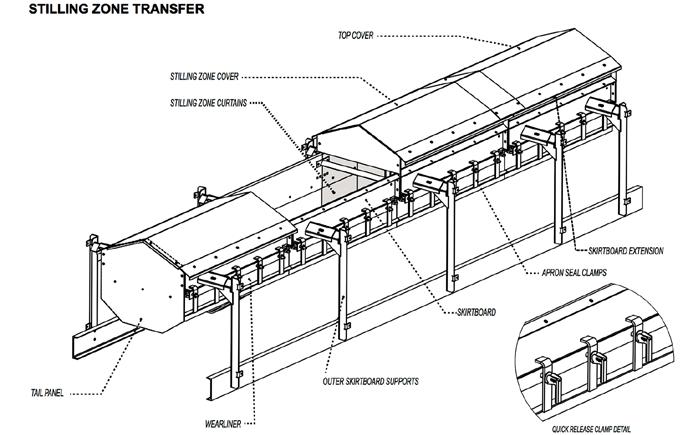
MODERN STILLING ZONES FEATURE COMPONENTS DESIGNED TO REDUCE MAINTENANCE AND IMPROVE SAFETY © MARTIN ENGINEERING 2022
Rethinking Belt Cleaning
Faster belt speeds can also cause higher operating temperatures and increased degradation of cleaner blades. Larger volumes of cargo approaching at a high velocity hit primary blades with greater force, causing some designs to wear quickly and leading to more carryback and increased spillage and dust. In an attempt to compensate for lower equipment life, manufacturers may reduce the cost of belt cleaners, but this is an unsustainable solution that doesn’t eliminate the additional downtime associated with cleaner servicing and regular blade changes.
As some blade manufacturers struggle to keep up with changing production demands, industry leaders in conveyor solutions have reinvented the cleaner industry by offering heavy-duty engineered polyurethane blades made to order and cut onsite to ensure the freshest and longest lasting product.
Using a twist, spring or pneumatic tensioner, the primary cleaners are forgiving to the belt and splice but are still highly effective for dislodging carryback. For the heaviest applications, one primary cleaner design features a matrix of tungsten carbide scrapers installed diagonally to form a threedimensional curve around the head pulley. Field service has determined that it typically delivers up to four times the service life of urethane primary cleaners, without ever needing re-tensioning.
Taking belt cleaner technology into the future, an automated system increases blade life and belt health by removing blade contact with the belt any time the conveyor is running empty. Connected to a compressed air system, pneumatic tensioners are equipped with sensors that detect when the belt no longer has cargo and automatically backs the blade away, minimising unnecessary wear to both the belt and cleaner. Additionally, it reduces labour for the constant monitoring and tensioning of blades to ensure peak performance. The result is consistently correct blade tension, reliable cleaning performance and longer blade life, all managed without operator intervention.
Power Generation
Systems designed to operate at high speeds over considerable distances are generally powered only at vital locations such as the head pulley, disregarding adequate power for autonomous “smart systems”, sensors, lights, accessories or other devices along the length of the conveyor. Running auxiliary power can be complicated and costly, requiring transformers, conduits, junction boxes
and oversized cables to accommodate the inevitable voltage drop over long runs. Solar and wind can be unreliable in some environments, particularly in mines, so operators require alternative means of reliable power generation.
By attaching a patented mini-generator to idlers and using the kinetic energy created by the moving belt, the accessibility obstacles found in powering ancillary systems can now be overcome. Designed to be self-contained power stations that are retrofitted on to existing idler support structures, these generators can be employed on virtually any steel roller.

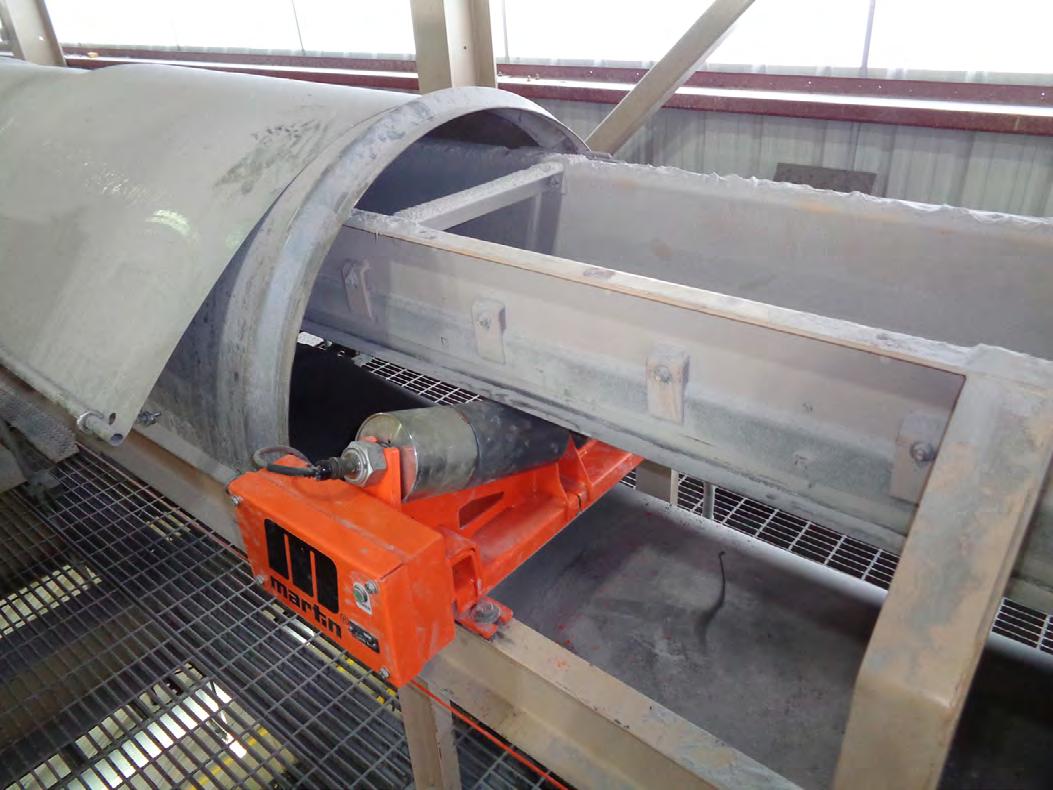
A SINGLE ROLL GENERATOR HAS ENOUGH POWER OUTPUT TO RUN A VARIETY OF ACCESSORIES © MARTIN ENGINEERING 2022
The design employs a magnetic coupling that attaches a “drive dog” to the end of an existing roller, matching the outside diameter. Rotated by the movement of the belt, the drive dog engages the generator through the outer housing’s machined drive tabs. The magnetic attachment ensures that electrical or mechanical overload does not force the roll to stop; instead, the magnets disengage from the roll face. By placing the generator outside the material path, the innovative new design avoids the damaging effects of heavy loads and fugitive material.
Bulk Handling, Safety and Automation in the Future
Automation is the way of the future, but as experienced maintenance personnel retire, younger workers entering the market will face unique challenges, with safety and maintenance skills becoming more sophisticated and essential. While still requiring basic mechanical knowledge, new maintenance personnel will also need more advanced technical understanding. This division of work requirements will make it difficult to find people with multiple skill sets, driving operators to outsource some specialised service and making maintenance contracts more common.
Conveyor monitoring tied to safety and predictive maintenance will become increasingly reliable and widespread, allowing conveyors to autonomously operate and predict maintenance needs. Eventually, specialised autonomous agents (robots, drones, and so on) will take over some of the dangerous tasks, particularly in underground mining as the return on investment for safety provides additional justification.
Ultimately, moving large quantities of bulk materials inexpensively and safely will result in the development of many new and higher capacity semi-automated bulk transfer sites. Previously fed by truck, train or barge, long overland conveyors transporting materials from the mine or quarry site to storage or processing facilities may even impact the transportation sector. Stretching vast distances, these long bulk handling networks have already been built in some places with low accessibility but may soon be commonplace in many areas around the world.
REFERENCES [1] “SLIPS, TRIPS & FALLS IDENTIFICATION AND PREVENTION;” OCCUPATIONAL SAFETY AND HEALTH ADMINISTRATION; SACRAMENTO, CA 2007. OSHA.GOV/DTE/GRANT_MATERIALS/FY07/SH-16625-07/SLIPSTRIPSFALLS.PPT [2] SWINDERMAN, TODD; MARTI, ANDREW D.; MARSHALL, DANIEL: “FOUNDATIONS FOR CONVEYOR SAFETY;” MARTIN ENGINEERING, SECTION 1, PG. 14. WORZALLA PUBLISHING COMPANY, STEVENS POINT, WI 2016. MARTIN-ENG.COM/CONTENT/PRODUCT/690/SAFETY-BOOK
MARTIN® CLEAN BELT SYSTEMS & SERVICES
Eliminate material carryback and increased cost of operation involving manual cleanup, damage to belts and systems, and downtime and lost production. Martin® clean belt systems and services ensure your conveyor belts are cleaner, safer, and more productive by providing unsurpassed cleaning performance and remote monitoring with industry-leading technology, experience, and knowledge.
FACTORY DIRECT SALES & SERVICE CALL 800-544-2947
VISIT MARTIN-ENG.COM
® Registered trademark of Martin Engineering Company in the US and other select locations. © 2021 Martin Engineering Company. Additional information can be obtained at www.martin-eng.com/trademarks and www.martin-eng.com/patents

N.M. HEILIG: A ONE-STOP SHOP
COMPANY NEWS
STACKER CONVEYORS AS MOBILE SHIP LOADERS FOR TRANSSHIPMENT OF BULK MATERIALS
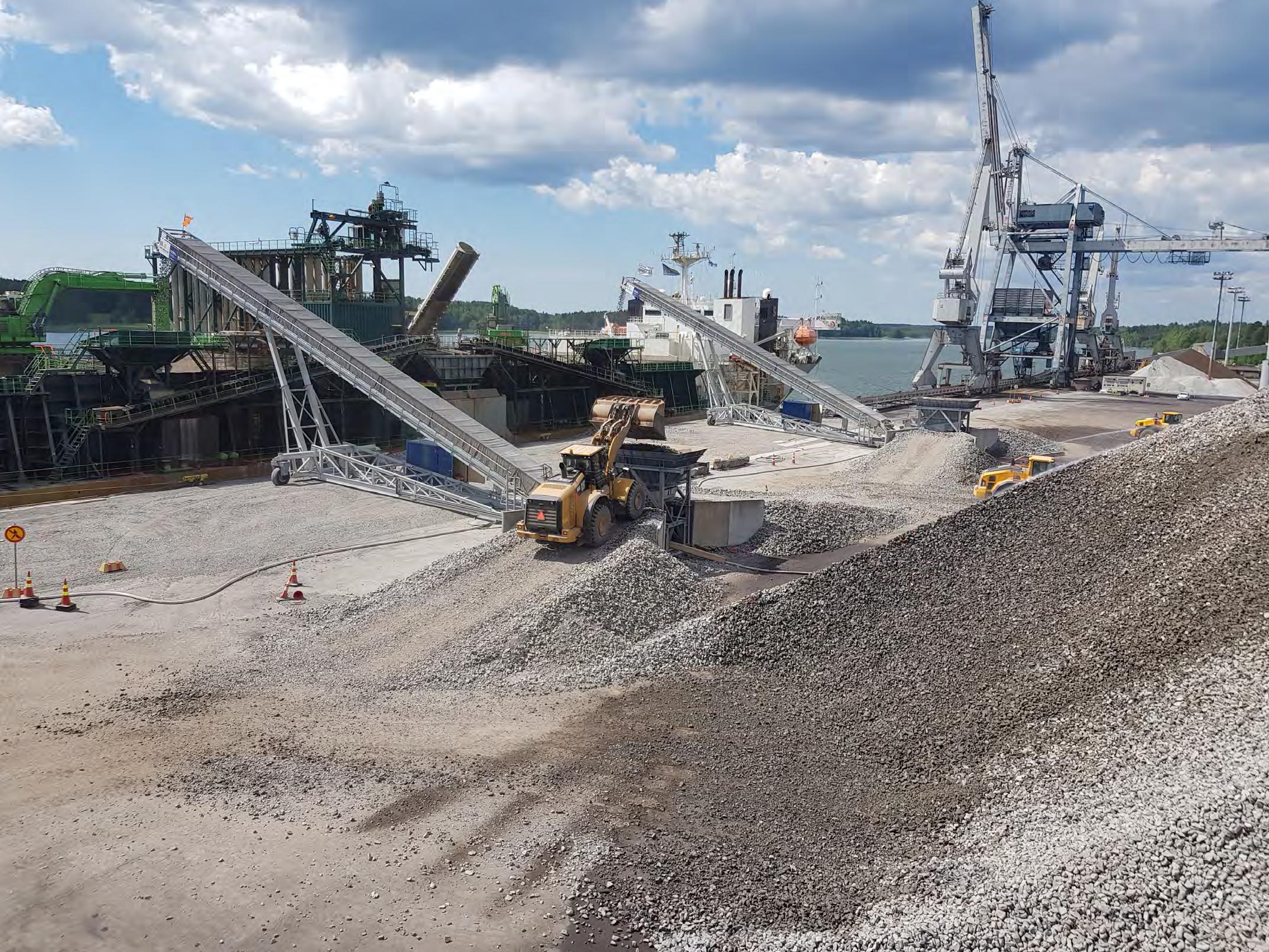
Dutch family-owned enterprise N.M. Heilig is known throughout the world as one of the leading suppliers in bulk material handling and recycling equipment, contributing to many plants and production facilities in all kinds of industries. With more than 40 years of experience, gained knowledge and in-house expertise, N.M. Heilig is considered a specialist in the field of engineering.
Every day, a wide variety of bulk material is being shipped, transshipped, processed, stored and transported again. N.M. Heilig has been specialising in the handling and recycling of bulk material since it was founded in 1978.
solutions to suit
As every request requires a different approach, N.M. Heilig offers customised solutions, whether for transport, storage or processing of dry bulk ingredients or solid bulk materials, or sorting recyclable waste. We like to challenge ourselves and want to create the best and most efficient solution for our customers. Direct communication is important to us and sets clear expectations, so when we start a new project, we comprehensively review the entire scheme with our customer. We are fully committed to every project that we undertake. With our years of experience, we know how important it is to work together, taking all specifications into account during the development stage, such as throughput, storage capacity, bulk characteristics, and so on. Our equipment can process high capacities and throughputs if needed. We aim for high purity and recovery rates and, according to our customers’ requirements, we match the best-suited dosing and feeding equipment.
The variety of project requests is endless –and so are our solutions. At N.M. Heilig, we work with dedicated employees that go the extra mile to ensure a successful project. We want satisfied customers and we want to meet and preferably exceed expectations in line with international health and safety standards.
BELT CONVEYOR OF FULLY AUTOMATIC SAND DEPOT INSTALLATION
working closely together
N.M. Heilig is part of Heilig Group. This enables N.M. Heilig to access the other companies within the group and work closely together. Each and every company has its own expertise that can add value to certain projects, providing a successful solution from concept to installation. With its own manufacturing facilities, Heilig Group is independent, flexible and fast. We have skilled technical engineers for the development process and we programme the software ourselves to operate the bulk handling and recycling systems. Our technicians and mechanics are on site to carry out works, while technical support offers maintenance services to keep the systems operating at all times at full speed, minimising downtime and preventing unexpected maintenance.
As N.M. Heilig operates within Heilig Group, we are able to offer a full package of support, from project management, engineering, development and manufacturing, to commissioning turnkey solutions on site and providing maintenance services, including 24/7 emergency services.
However, we also advise on stationary and mobile units for optimising bulk material handling and recyclable waste streams. We offer machinery that pre-sorts, sorts, separates, cleans and dries bulk material from a waste stream. We implement strong, durable high-quality components that last. Screens, conveyors, dosing bunkers, silos, hoppers, crushers, eddy current separators, overbelt magnets, optical sorting (NIR), classifiers and air separators are just a few of our products.
Contact us now and let us find out how we can design and manufacture a system that meets exactly your standards and requirements.

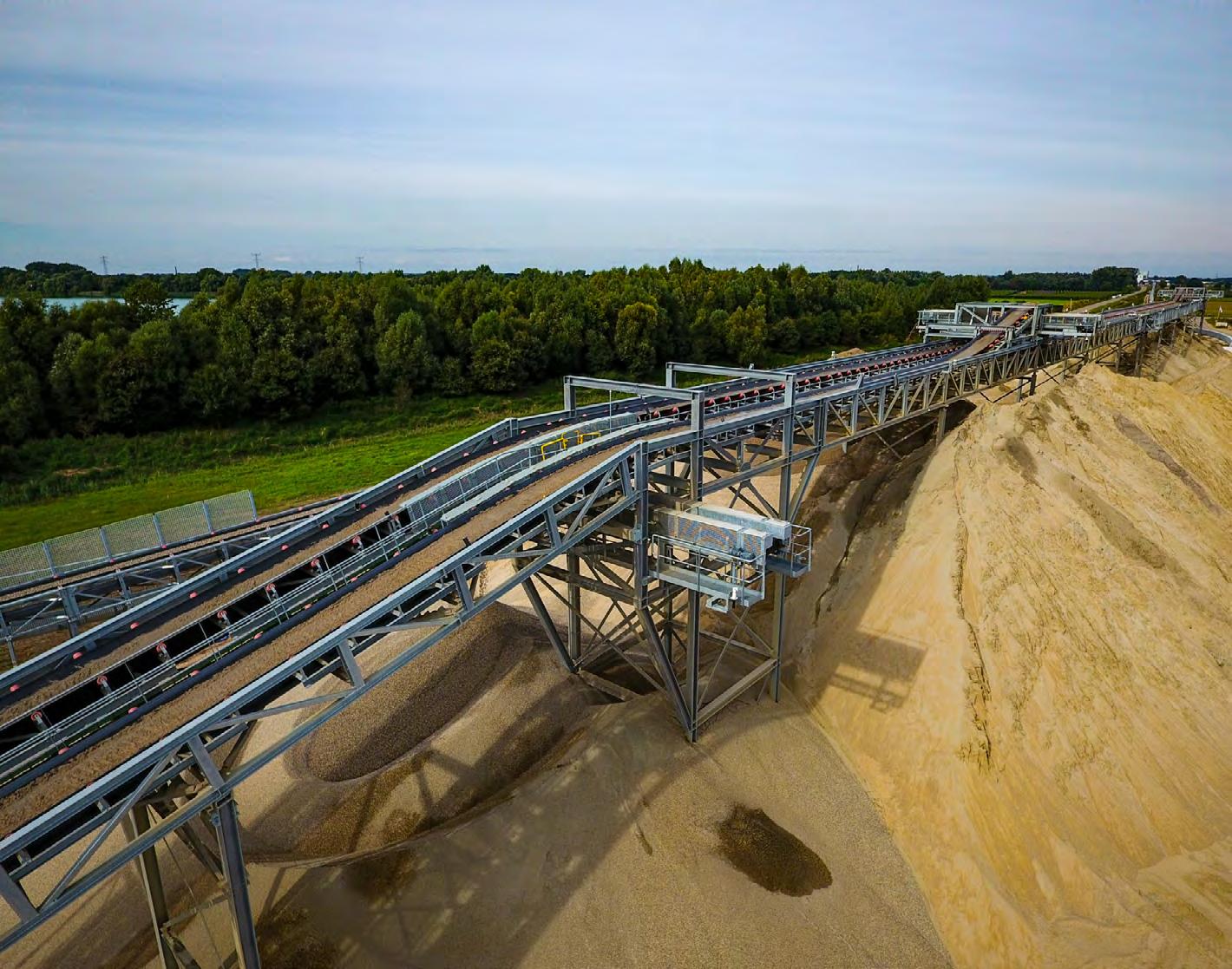
For more information, contact: N.M. Heilig B.V. Newtonstraat 17 1704 SB Heerhugowaard The Netherlands Tel: +31 (0)72 5716688 Email: info@heiligbv.com heiligbv.com









